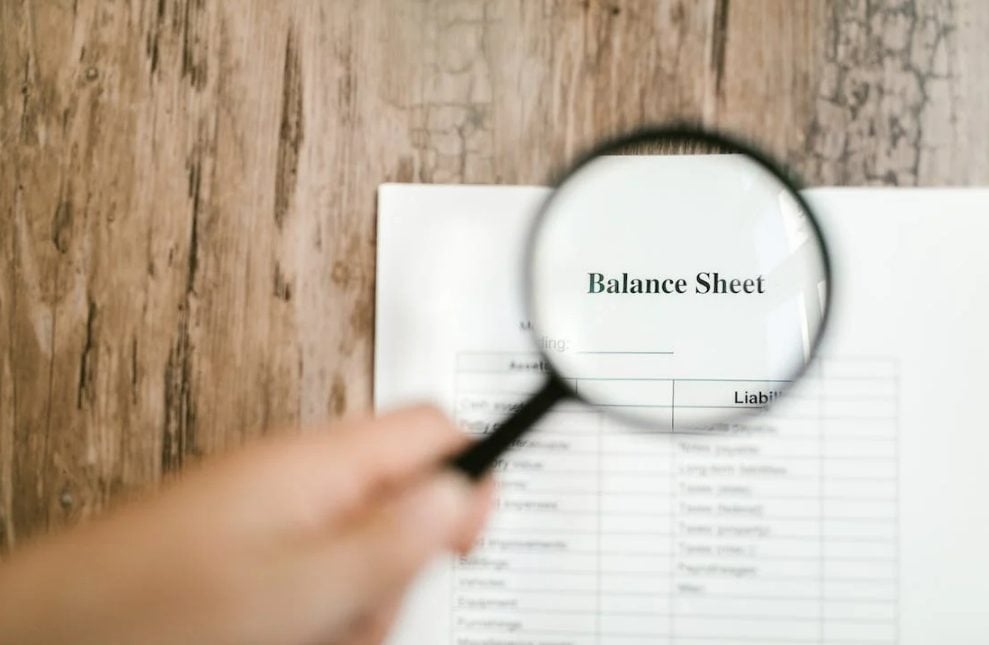BLOGS
Global Balance Sheet: How Productively Are You Using It?
“Ordinary people think merely of spending time, great people think of using it.”
-Arthur Schopenhauer, German philosopher
In a day, we have twenty-four hours, and it is important that we make the most out of it.
With this said. it is crucial for us, especially those in business industry, to have productivity tools in order to increase efficiency.
What is a Balance Sheet?
A balance sheet is a type of financial statement that provides information regarding an organization’s assets as well as its liabilities as of a particular time period.
A balance sheet is one of the 3 core financial statements that are used for analyzing the business’s overall performance.
The other financial statements are the cash flow statement and income statement.
The purpose of a balance sheet is to provide investors, as well as the other stakeholders with reference documents that can give them an idea of the organization’s overall financial health.
A balance sheet gives them the ability to evaluate current assets and liabilities in order to assess the liquidity of the company or to compute the rate where the business generates returns on its investments.
Analyzing two or more balance sheets that were created at different times can also demonstrate how much growth a company has experienced.
Stakeholders can gain a better understanding of the company’s prospects with the aid of this data.
For illustration, when a company is applying for a loan, the balance sheet can be presented as evidence of the company’s ability to repay the loan.
Creditors can determine whether the company is able to meet its short-term obligations and the level of financial risk it is taking by determining whether the company’s current assets are significantly larger than its current liabilities.

How does a balance sheet contributes to the success of a business?
1.) Allows for a more complete analysis of the company’s financial health
Fully understanding where your company stands financially is perhaps the most crucial part of running a business.
To assess the financial health of any part of your business, you must first consult your balance sheet, which lists all of your assets and liabilities as of a specific date.
Nevertheless, balance sheets are useful not only to the business owner, but also to potential investors who frequently use them to help them decide whether or not to invest in the company.
When balance sheets are published on a regular basis, the investors and the company owner gain insight into the company’s financial health and can monitor its progress in reducing costs.
2.) Attracting Investors and Securing Loans
The health of your business’ finances can be quickly assessed with the help of your balance sheet.
A balance sheet is a financial statement that lenders use to assess a company’s financial health and creditworthiness.
If you need to borrow money, your creditor will want to see that you have a track record of timely debt repayment in your financial statements.
Investors can see where their money is going and when they can anticipate a return by perusing the balance sheet.
3.)Determining the Efficiency, Productivity, and Liquidity of the Business
By maximizing outputs and minimizing costs, an organization is efficient.
The efficiency of your business can be gauged with the aid of a balance sheet, which highlights any areas that are steadily bringing in or losing money.
The total cost of labor as an expense provides a measure of productivity.
Lastly, the term “liquidity” is used to describe the availability of assets that can be bought and sold quickly without having a significant impact on the value of the business.

4.) Keeps a precise count of your stock
Inventory, which is a full list of items as products in stock) is among the most essential aspects of any business.
If you see a lot of inventory on your balance sheet, for instance, you know that there’s a chance your products will become obsolete and can decide whether or not to lower their prices accordingly.
Keeping track of the inventory helps you avoid losses due to spoilage, theft, and obsolescence, all of which make your company a more appealing investment opportunity for potential backers
5.) Helps in Making Business Decisions Over the Long Term
Keeping tabs on your company’s cash flow can help you spot problems before they escalate.
The majority of failing businesses have cash flow issues that would be easy to spot and fix with up-to-date financial statements.
What is the global balance sheet?
In a manner that is analogous to the manner in which a corporation constructs its balance sheet, we construct a global balance sheet by adding up all of the real assets in the economy in addition to all of the financial assets through all the industries, including, most notably, the financial sector.
At a more fundamental level, the global balance sheet can be broken down into three interlocking components: the balance sheet of the real economy, the balance sheet of the financial system, and the balance sheet of the financial sector.
By analyzing the assets and liabilities of households, governments, corporations, and financial institutions, the global balance sheet provides an assessment of the state of the global economy in terms of both its wealth and its overall health.
For close to three quarters of a century, the global balance sheet has consistently grown at a rate that is higher than GDP.
During the pandemic, there was a noticeable acceleration in the expansion of the global balance sheet.
In the first two sharp years of the pandemic, 2020 and 2021, when governments initiated huge support for economic activity, households around the world, which added $100 trillion to the global wealth “on paper.”

This occurred simultaneously with a surge in asset prices and the minting of $39 trillion in new currency and deposits.
As a direct consequence of this, the value of the world’s wealth in relation to GDP increased at a rate that exceeded that of any other two-year period in the preceding nine decades.
As a result of governments and central banks stimulating economies, the total amount of debt and equity liabilities increased by approximately $50 trillion and $75 trillion, respectively.
The accrual of new debt increased to a rate of $3.40 for every $1.00 in net investment during this time period.
Two-thirds of the world’s real assets, also known or net worth, are held in the real estate.
According to McKinsey Global Institute, in the year 2020, the value of residential real estate, which included the land beneath it, accounted for 46 percent of the total wealth of the world.
While the value of commercial and government buildings, along with the land beneath them, accounted for an additional 23 percent.
Other fixed assets such as machinery and equipment, infrastructure, intangibles, and mineral reserves, and industrial structures, which are the types of assets that generally stimulate economic growth, composed only one-fifth of real assets or net worth.
This percentage ranged from 15% in France and the United Kingdom to 39% in Japan.
Other countries’ percentages fell somewhere in between.
Invest in Real Estate, Invest in a Brittany Home
The Brittany Corporation is the pioneer in creating themed luxury home communities that are both visually stunning and functionally ideal.
Brittany’s high-end neighborhoods are designed to feel like miniature versions of some of the world’s most breathtaking places.
Vista Alabang, Crosswinds Tagaytay, Brittany Sta. Rosa, and The Lakefront Sucat are some of the luxurious communities of Brittany Corporation that you may choose from.
Suggested Read: How Crosswinds Tagaytay Allows You To Live In A Balance With Nature
Suggested Read: Swiss Interior Design Ideas For Your Condo In Tagaytay
Suggested Read: How To Plan Your Finances To Get The Life You Want
Suggested Read: Duvet Vs. Comforter: What’s The Difference
Suggested Read: Home Insurance For Your Luxury Home














